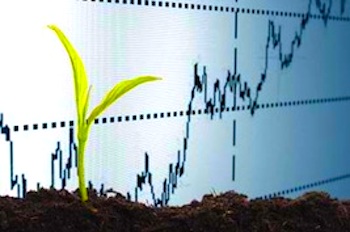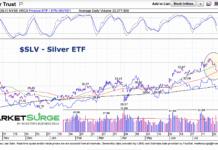Each money manager and/or investor has a process that helps them determine when, how and how much to invest.
The process that I use starts by looking at whether the United States and/or global economy is expanding or contracting. In other words, I first try to determine whether the global and/or US economic tide is coming in or going out.
In a growth-slowing environment, there is more risk than reward in trying to capture the return of the S&P 500 (INDEXSP:.INX). In a growth-growing environment, we want to more closely track the S&P 500 (or similar equity indexes) because that is where the best risk/reward equation is.
If the economic tide is coming in, then I want to be invested in stocks and bonds that act like stocks; if the economic tide is going out, I want to avoid most stocks and invest more heavily in bonds.
For instance, post the economic crash in 2008, the economic tide starting coming in and stayed that way through 2014. As we moved into 2015, though, there were signs that the slowdown occurring globally was beginning to impact the economy in the United States. The economic data was starting to shift from growth to neutral and then toward slowing. That coincided with the S&P 500 hitting an all-time high in July of that year. (Keep in mind that stock markets don’t always closely track the direction of the economy over the short-term (weeks to months)). From a money management perspective, that slowing economic data coinciding with the S&P 500 not continuing to set new highs was a signal to reduce my equity exposure. Over time, the data continued to slow the rest of 2015 and most of 2016.
In a third quarter review presentation, I went through the data showing that growth was slowing and had been for the last 2-3 years. The macroeconomic data on November 2nd indicated that US GDP would slow to 0.5% in the fourth quarter of 2016, then slow even further to -0.7% (negative) in the first quarter of 2017. Data the day before the election indicated that the US jobs report “registered its slowest pace of growth in its current cycle and for all of 2016.”
Then the economic data started to change:
- On 11/16/16 the release of the October retails sales number was significantly stronger than expected.
- Further data on 11/18/16 corroborated that for the first time in almost two years the economic data was indicating that growth was accelerating.
- The economic tide stopped going out and was starting to come in. By the way, these numbers were from data before the election but not reported until after the election.
- New GDP projections indicated that Q1 (quarter over quarter) GDP should increase from 0.5% to 1.5% on a seasonally adjusted rate. That would be the first increase in two years.
 According to my process, the change in data meant that it was time to sell any remaining growth-slowing positions and start to allocate accounts for a growth-accelerating environment that will favor stocks over bonds. I started buying equities in early December. In this environment, we want to more closely track the S&P 500 (or whatever benchmark you are using).
According to my process, the change in data meant that it was time to sell any remaining growth-slowing positions and start to allocate accounts for a growth-accelerating environment that will favor stocks over bonds. I started buying equities in early December. In this environment, we want to more closely track the S&P 500 (or whatever benchmark you are using).
That doesn’t mean that I expect to be fully invested at all times. It does mean, though, that I will want to maintain a core equity position as long as the economic tide is coming in. One of the ways that I will express that is by using multiple actively managed mutual funds and/or passively managed exchange-traded funds. The expectation is that these positions will remain for months to years as long as the economic tide is coming in. In addition to those core positions, I will have trading positions that are expected to be held from weeks to months.
The amount of cash and/or bonds will fluctuate depending on market conditions and performance. For instance, if the markets are moving in a sideways or down pattern, then it may be possible to track the performance of the benchmark with only 50-60% of the account invested in equities while the rest is in a money market and/or low-volatility bonds. If markets continue to trend higher, more money can be added to equities to more closely track the index.
I’m Optimistic Going Forward.
- This is the first time we’ve been in a GDP growth accelerating environment since 2014.
- Lower taxes, lower regulation, etc. may result in much higher growth rates.
- The Federal Reserve will be raising rates—imagine being able to earn 3% on money markets again! Interest rates have been at or near 0% since 2006. The economy having growth and inflation is a dream for the Fed because it allows them to raise rates for the right reasons.
- It is possible that we can return to multi-year growth cycles like we saw in stocks between 2003 and 2007.
- But it is also possible that the rancorous atmosphere results in a general malaise that hinders growth…so we have to continue to monitor the markets, map the economic climate and adjust accordingly.
Thanks for reading.
Twitter: @JeffVoudrie
Any opinions expressed herein are solely those of the author, and do not in any way represent the views or opinions of any other person or entity.








